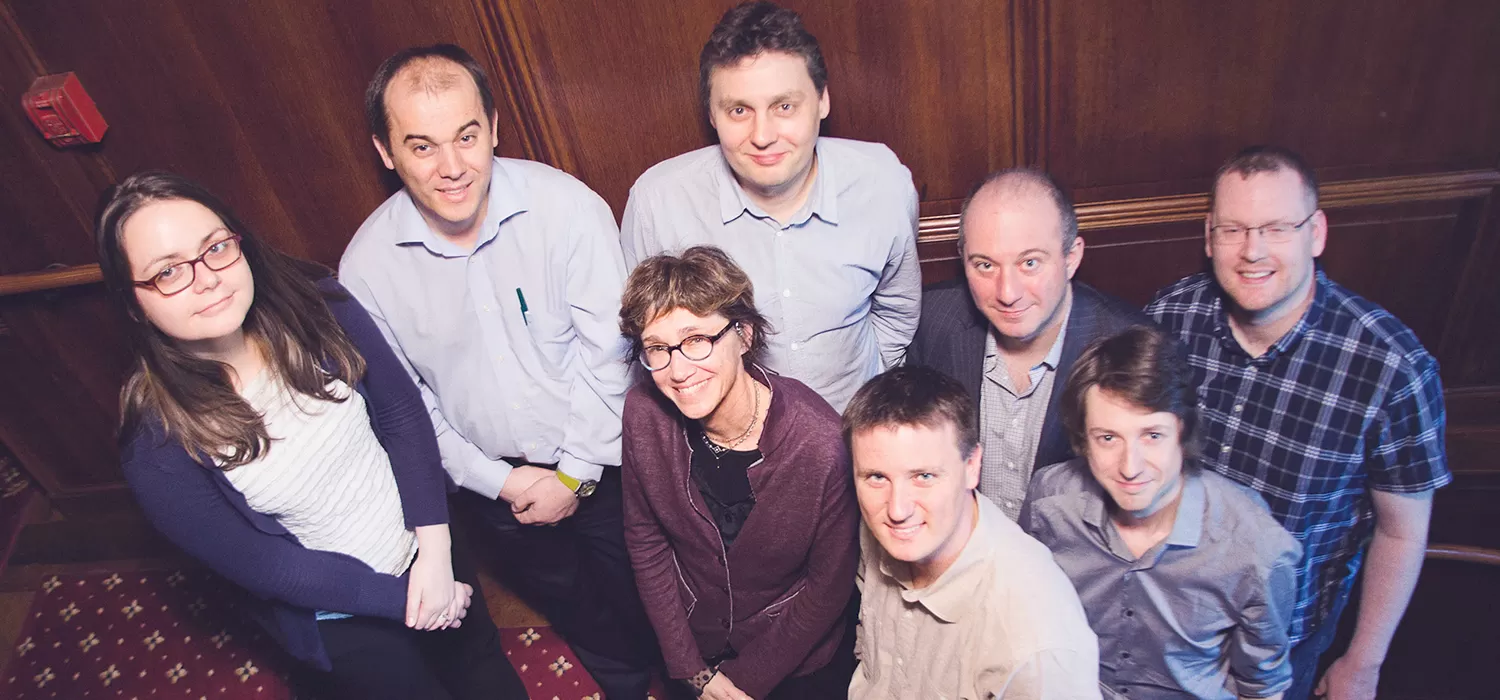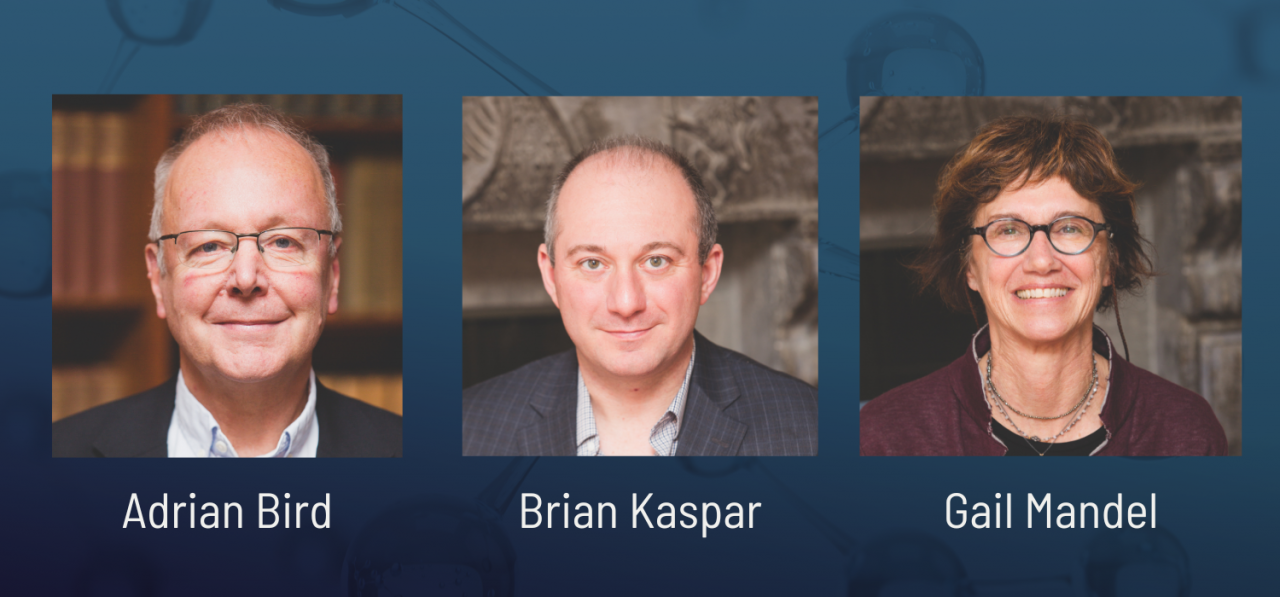Leading the Cure for Rett: In Gene Replacement, There’s No Replacement for RSRT

The recent news that the first gene replacement clinical trial for Rett syndrome is now recruiting patients is a major milestone for the Rett syndrome community. It’s a moment many of us have been dreaming about for a long time and one that I have been working towards for the last 23 years.
I find my thoughts being pulled back to pivotal moments and to game-changing decisions over the last two decades, a few of which I will share.
MECP2 Makes an Appearance
On a hot summer night in August of 1999, a year after my daughter’s Rett diagnosis, an instant message popped up on AOL. My heart jumped as I read the words “I’ve heard that the Rett gene has been identified.” I spent the next 24 hours chasing down leads to see if I could verify the claim. It was indeed true. After a 16-year search funded by the National Institutes of Health and the Howard Hughes Medical Institute, Ruthie Amir, PhD, a post-doc in the lab of Huda Zoghbi, PhD, had identified the genetic cause of Rett: mutations in the MECP2 gene. Less than a week later I held in my hands a piece of paper that confirmed Chelsea’s Rett diagnosis; she had the most common mutation, T158M.
Knowing the genetic cause of Rett was massively important. I had just started my first Rett syndrome research organization, the Rett Syndrome Research Foundation (RSRF), and the first matter of business was to get as many basic science labs working on Rett as we could afford.
An Audacious Experiment
Fast forward to 2003 and Adrian Bird, PhD, (that was before he was Sir Adrian Bird) came to me with a funding request for an audacious experiment. He wanted to test whether Rett symptoms in mice were reversible and, if so, whether there was a timeframe within which one had to intervene to achieve reversal. We provided the funding for what became a landmark experiment that is still lauded to this day. The experiment was long and arduous with some rollercoaster twists and dips along the way, but ultimately the results were spectacularly successful: Rett symptoms were dramatically reversible in mice.
Adrian presented the results at a science meeting I organized in the spring of 2006 and his paper was published the following February. I recently dug up a recording of Adrian’s presentation from that meeting, which has never been publicly available.
There are few people who have changed the trajectory of Rett research in the way Adrian has. He discovered MECP2 in the early 1990s, he made the first animal model of Rett (which has now been used in hundreds of labs around the world), he discovered that Rett symptoms in mice are reversible, he generated the mini-gene that is being used in Taysha’s gene replacement trial, and he has made critical discoveries about the function of the MECP2 protein. I have been fortunate to have Adrian as a mentor, advisor, and friend. Receiving an honorary degree from the University of Edinburgh, the site of so much great Rett research and with Adrian at my side, is a moment I will always treasure.
The Result that Changed Everything
For me, the reversibility changed everything. I wanted to focus 100% on translating Adrian’s results to our children, and I wanted complete freedom to follow the science wherever it led. When RSRF and the original parent support group, International Rett Syndrome Association, merged to become the International Rett Syndrome Foundation (IRSF), I resigned to start my second Rett syndrome research organization, the Rett Syndrome Research Trust (RSRT). Adrian came with me as a founding trustee of RSRT, a role he holds to this day.
The Beginnings of Gene Replacement for Rett
Gene replacement was and remains the most expeditious way to translate the reversibility studies seen in mice to humans. In 2010 RSRT started funding gene replacement projects. We began by funding Ron Crystal, MD, and then Brian Kaspar, PhD, in a collaboration with Gail Mandel, PhD. In August 2013, with RSRT funding, the Mandel, Kaspar, and Bird labs published a paper showing the reversal of symptoms in female Rett mice. Importantly, this paper used a traditional gene replacement strategy that could be used in people, unlike the 2007 Bird experiment, which employed a proof-of-concept strategy to answer the question of reversibility in mice but could not be translated directly to people.

That same month I received the following email from Stuart Cobb, PhD, a neuroscientist who was a co-author on Adrian’s 2007 paper and who subsequently became passionate about developing genetic cures for Rett syndrome.
"This is just a quick enquiry as you are the person with their finger on the pulse! The reason I write is to gauge your feeling on the current status with regards to gene therapy research in Rett syndrome. Adrian may have told you already but we received notification from the MRC (UK government body) that they are not going to fund my proposed continued work in the area of RTT gene therapy. Sadly, the proposal was torpedoed by a critical reviewer despite very positive scores otherwise. This was something of a blow and means an inevitable loss of momentum for my lab. I am at something of a crossroads in that I would like to follow the gene therapy work as there are many key questions to address. I am actively seeking funds to push forward and wanted your views on the way forward for gene therapy."
A Valuable Investment
I invited Stuart to submit a proposal and, as they say, the rest is history. In 2014 Stuart was invited to join our Gene Therapy Consortium along with Steve Gray, PhD, Brian Kaspar, and Gail Mandel.
Aided by almost $3 million of funding from RSRT, Stuart has become one of the most translationally minded Rett researchers in the world, focusing on how to bring laboratory discoveries to patients and families. In 2018 RSRT Chief Medical Officer Randy Carpenter introduced Stuart to Rachel McMinn, PhD, the CEO of Neurogene, where his gene replacement program is now being pursued with great urgency.
That Gene Therapy Consortium is one of the most valuable investments RSRT has made as the data generated formed the foundation of the Rett programs at Taysha, Neurogene, Vico, and AveXis (later terminated by Novartis).
Walking the Walk
RSRT was funding gene replacement at a time when many considered it a waste of money or something that was a lifetime away. It’s easy to jump on the gene replacement bandwagon once it’s obvious that it is the wave of the future. The hard part was realizing that it could be the wave of the future before it actually was. That requires an organization that is comfortable with taking risks, understanding the field enough to know which scientists to recruit, having the financial resources to incentivize them to work on Rett, and building the infrastructure for collaboration. To date RSRT has invested $11 million in gene replacement projects. Anyone can talk the talk. But walking the walk is entirely different. RSRT did that, and I’m pretty damn proud of that.
Biopharma Gets Interested
There have been some disappointments along the way. Novartis terminating the Rett program that got its start at RSRT was one of them. But the disappointments pale into insignificance when compared with the progress.
In 2017 there were zero companies with genetic drug programs for Rett. Today there are eight, with more on the way. All of these programs either started at RSRT (Taysha, Neurogene, Vico, Beam, Alcyone) or they leveraged resources, such as our biorepository, to enable their programs (Shape, Wave, Herophilus).
Gone are the days when I started meetings with biopharmaceutical executives by explaining what Rett syndrome is. Today biopharma companies know about Rett, they are up to date on research activities, and often they have had internal conversations on the pros and cons of adding a Rett program to their pipeline.
Our progress comes thanks to the many Rett families in the US and abroad who did not accept the status quo but took action themselves. Between them, RSRT and RSRF have raised $105 million for research. Every family who takes action to raise funds for RSRT has my gratitude and my respect.
Heightened Urgency
And yet I am acutely aware that our children have not yet reaped the benefit of all this effort. My daughter, Chelsea, at age 26, suffers from every symptom in the Rett playbook. I feel the acute urgency in every cell of my body, every day.
RSRT’s goal is not to treat Rett – we leave that to others – our goal is to cure Rett. I have no doubt that, eventually, newborns will receive a genetic drug at birth, or even in utero, and they will never develop Rett symptoms. Whether Rett symptoms in a 5-, 10-, 15-, 20- or 40-year-old can be improved or reversed remains to be tested. We will get some initial clues with the Taysha trial. It’s the first genetic drug trial, but it won’t be the last.
RSRT has put genetic drug development for Rett on the map. On behalf of my loved one and yours, RSRT will continue to be at the forefront, driving, pushing, and catalyzing programs that attack the root cause of Rett.


